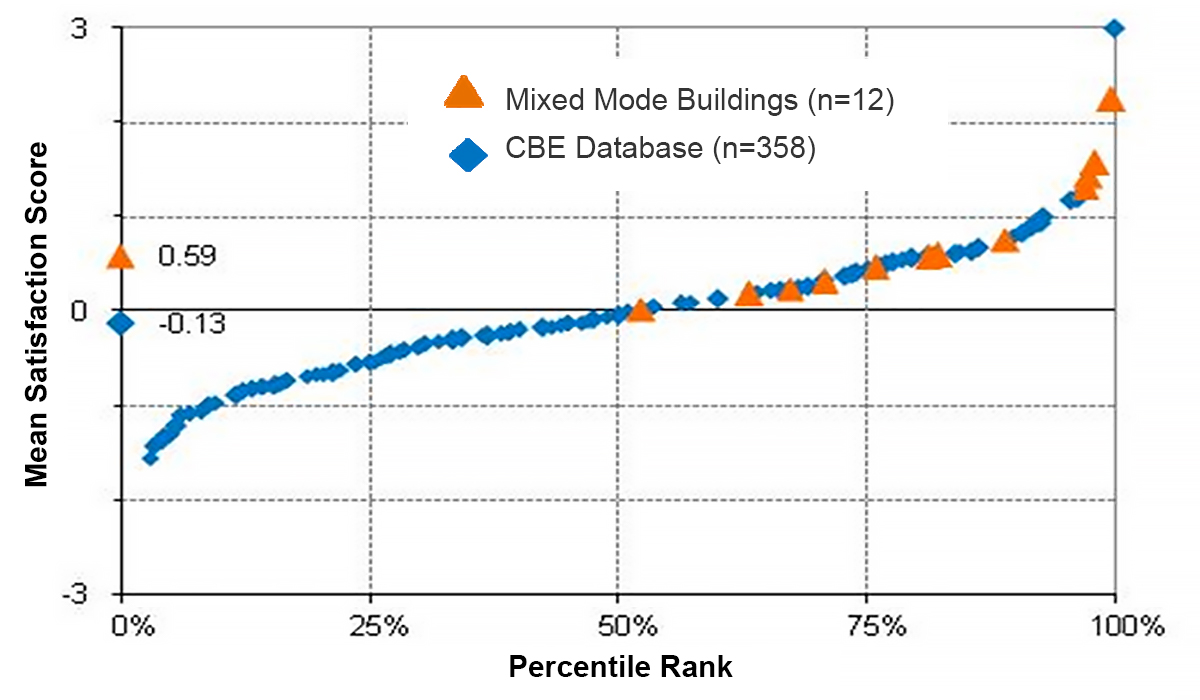Comparing occupant satisfaction with indoor environmental quality of mixed-mode and sealed buildings.
Status: Completed
Funding Sources: CBE Industry Consortium
Project Objective
Compare mixed-mode and sealed buildings in terms of occupant satisfaction with indoor environmental quality.
Significance to Industry
Mixed-mode buildings are becoming increasingly common as a way to balance energy savings and temperature control. If occupants of these buildings are at least as, and ideally even more, satisfied than occupants of sealed buildings, design professionals have more ways to dispel doubts about and advocate for these kinds of solutions.
Research Approach
The CBE Indoor Environmental Quality Survey focuses on seven areas of indoor environmental performance: thermal comfort, air quality, acoustics, lighting, cleanliness, spatial layout, and office furnishings. At the time this project was done, the database associated with the survey contained responses from 370 buildings, including 12 that were mixed-mode. The results from these 12 mixed-mode buildings were compared with the other (primarily sealed, air conditioned) buildings in the database.
These mixed-mode buildings performed much better than the overall building stock in the database, particularly with regard to thermal and air quality satisfaction. All of the mixed-mode buildings are in the top half of the percentile ranking for thermal comfort, and two thirds are in the top quarter. In terms of air quality, 31% of occupants in non-mixed-mode buildings are dissatisfied compared with only 14% in mixed-mode buildings.
On average, the mixed-mode buildings in the database are smaller and newer than the general building stock, but this difference does not completely account for the difference in satisfaction ratings. When compared only to buildings of similar size and vintage, the mixed-mode buildings are still more highly rated for thermal comfort and air quality.
Among the mixed-mode buildings, the best performers are in more moderate climates, are newer, and allow high degrees of direct user control. They also do not use changeover systems (i.e., the windows are open or the air-conditioning is on, but they don’t happen simultaneously) or forced air cooling. Instead, they have radiant cooling or mechanical ventilation.
Publications and Reports
Brager, G. and L. Baker, 2008. Occupant Satisfaction in Mixed-Mode Buildings. Proceedings, Air Conditioning and the Low Carbon Cooling Challenge, Windsor, UK, July.
Brager, G. and L. Baker, 2009. Occupant Satisfaction in Mixed-Mode Buildings. Building Research and Information, 37(4): 369-380.

